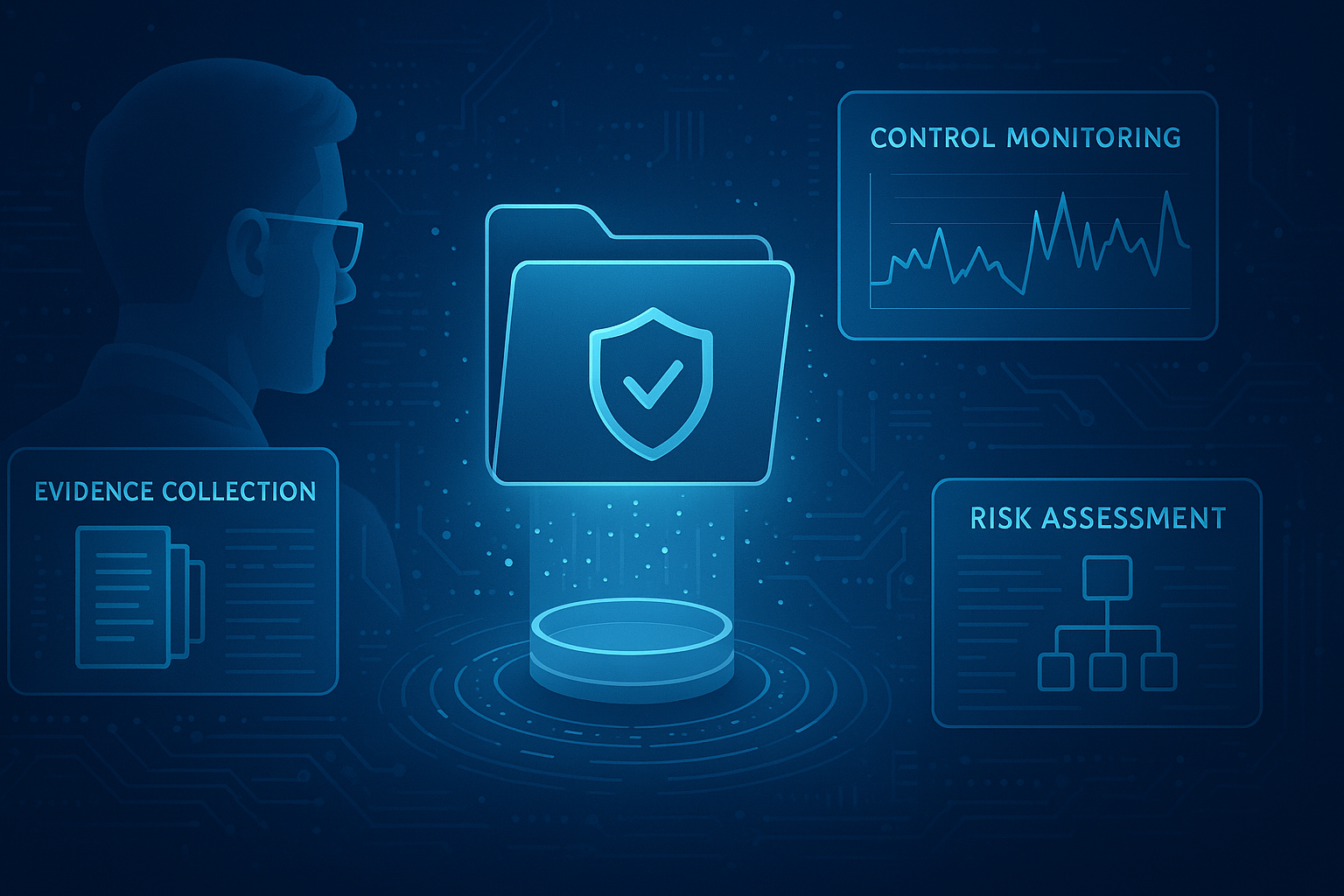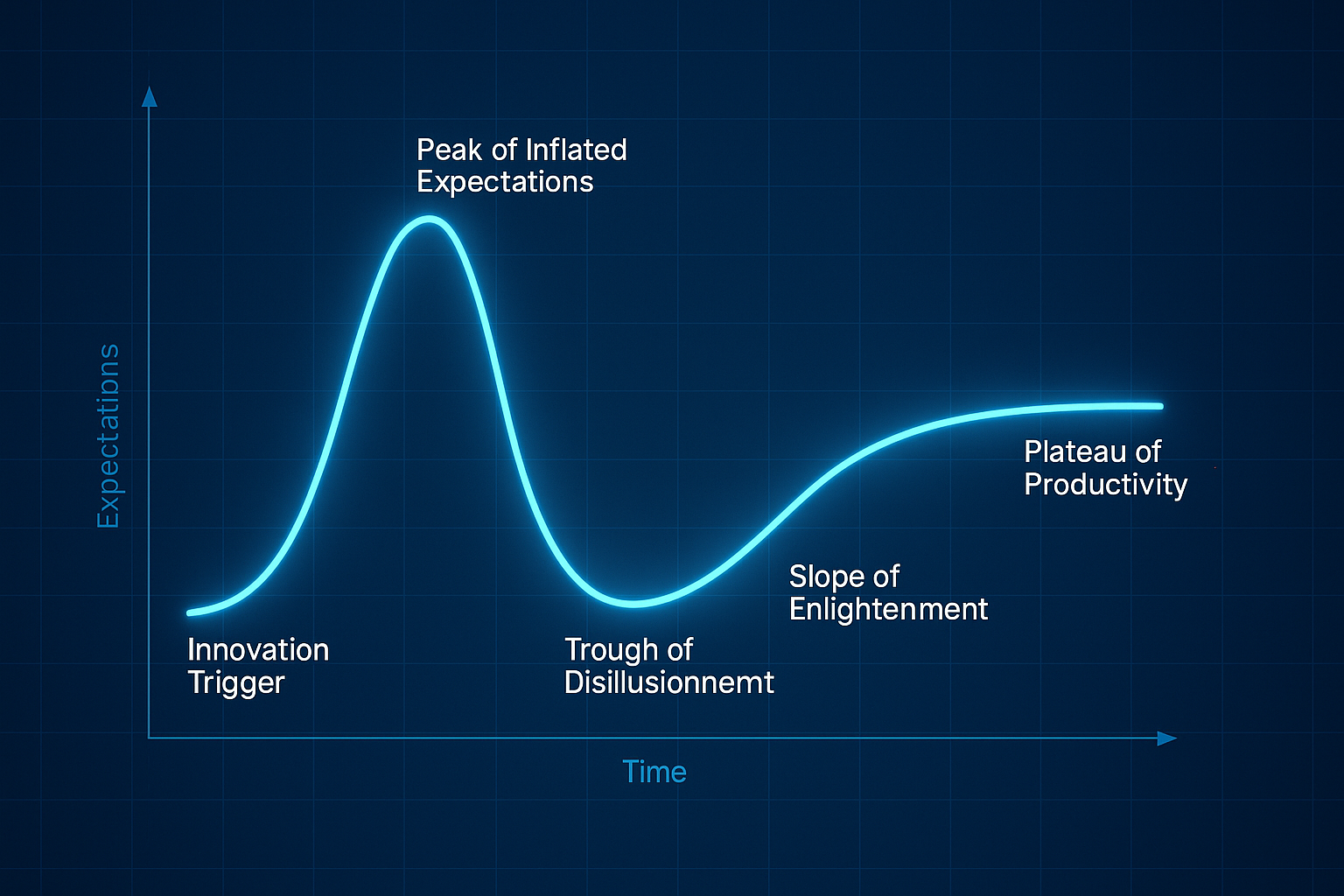Increasing cybersecurity threats continue to create problems for companies and organizations, obliging them to defend their systems. According to PurpleSec research, the annual cost of cybercrime has risen to $6 trillion. Cyber attacks can lead to significant financial losses for organizations of all sizes. Government agencies are also frequent targets of sophisticated cyber attacks, underscoring the widespread impact of these threats.
Top 10 Cybersecurity Risks and Threats
The 2022 Global Study by Ponemon Institute outlines key industries increasingly vulnerable to cyber threats. The listed industries faced the highest number of third-party attacks during the past year. This is the breakdown:
-
Education: 54%
-
Manufacturing: 46%
-
Financial: 58%
-
Public Sector: 50%
-
Healthcare: 55%
These sectors are often targeted due to the high value of their data and the critical need for strong cybersecurity defenses to protect against evolving threats.
Let’s look at the top ten, including major data breaches and cybersecurity risks facing the industry today.
Ransomware
Ransomware remains one of the most damaging cyber threats to businesses, as attackers continually evolve their tactics.
Ransomware encrypts a user’s network or system, preventing access to functionalities until a ransom payment is made to a third party. Antivirus software plays a key role in detecting and preventing ransomware attacks, but sophisticated ransomware can sometimes evade traditional antivirus solutions. After a ransom payment, an unlock code is released. Ransomware can also steal a company’s data and ask for additional payment to prevent attackers from exposing sensitive data, such as confidential business information, to competitors, authorities, and the public.
Ransomware can lead to double extortion, which involves attackers stealing sensitive information before encrypting data. This can lead to threatening to leak stolen data if the ransom is not paid.
NIST Ransomware Risk Management Profile (NISTIR 8374) has released a profile for attack vendors, alerting individuals on how malicious and ordinary its usage has become. This virus has been around since the 1980s, when criminals had access to encrypted files that they kept hostage till a ransom was paid through the postal service. The first ransomware attack was the AIDS Trojan (PC Cyborg Virus), released in 1989 through a floppy disk.
Malware
A malware attack is a broad category of cyber threats involving malicious software or code, which has been around since the inception of the internet and remains a significant risk in cybersecurity. This software or programming is installed on a target system and affects applications, data, and the operating system. Malware can spread from one device to another or remain isolated to the host device.
Types of malware include viruses, worms, trojans, spyware, and adware.
Malware has become the biggest threat to systems as it denies access to programs, deletes files, steals sensitive data, and spreads itself to surrounding systems, causing widespread disruption and damage. Malware often contains malicious code specifically designed to infect and compromise target devices.
Malware can spread from one device to another or remain isolated to the host device. Malware can spread from one device to another or remain isolated to the host device.
Distributed Denial of Service (DDoS)
Distributed Denial of Service (DDoS) attacks overwhelm an online service with incoming traffic from various sources and locations. A DoS attack, by contrast, involves a single source flooding a network with illegitimate requests, while a DDoS attack uses multiple sources to amplify the impact and make mitigation more difficult. This affects website response time, causing sites to slow down significantly or entirely shut down.
Even though a DDoS attack may not be the primary attack, it creates a distraction, allowing other fraudulent activities to occur without disruption. When this malware is planted, cybercriminals start developing Botnets, which are networks of infected computers. Hackers then use these computers to coordinate an attack against a target system.
The first-ever DDoS attack occurred in 1996, when an internet service provider, Panix, experienced a SYN flood, causing the network to go offline for several days.
Phishing Attack
Phishing is a term that dates back to the 1990s, originating from America Online (AOL). It is a type of social engineering attack, where attackers manipulate individuals into revealing sensitive information. This consisted of a group of hackers known as the Warez community, who impersonated AOL employees. They became the first phishers to collect sensitive personal information and login credentials of company users.
In many cases, the target may not realize they have been compromised during a phishing attack.
Cybercriminals pose as official representatives and send messages or emails requesting access to a website or account information. The email may include a link to a fake website that asks for confidential information. Mostly, these emails use proper names and logos, making it difficult to distinguish them from authentic emails. Spear phishing attacks are a more targeted form of phishing, where attackers conduct research to craft convincing, personalized messages aimed at specific individuals. When attackers collect sensitive information through phishing, stolen credentials can lead to identity theft, data breaches, and financial fraud.
Whale phishing attacks target high-profile individuals within an organization, such as executives. Whale phishing can be prevented by carefully examining emails and attachments for legitimacy.
Trojan Virus
The Trojan virus is another risk in cybersecurity, as it disguises itself as software or harmless file. Malicious hackers often use Trojan viruses to infiltrate systems and compromise security. This virus is highly damaging, as it attacks the system and establishes a backdoor that attackers can use at any time.
Users may receive official emails with legitimate-looking attachments. However, these attachments include malicious codes that corrupt a system as soon as they are downloaded.
SQL Injection
A SQL injection attack is a common cyber threat that manipulates data and targets websites with databases. Attackers use SQL injection to gain access to sensitive data by injecting malicious queries into data inputs, thereby obtaining information that is not usually available to the public. This is done by sending a code request to the server.
Unlike other viruses, SQL is a computer virus that emerged in January 2003, causing a lack of service on internet hosts and significantly slowing internet traffic. This virus spread fast, and within 10 minutes, it was able to affect 75,000 victims.
To defend against SQL injection attacks, organizations should adopt a least-privilege model for database access. The least-privileged model restricts access to sensitive databases only to users who absolutely need it. Web applications that do not sanitize user input are vulnerable to SQL injection attacks.
Insider Threat
Insider threats differ from the other listed threats because they are difficult to detect. This is especially risky, given that hackers already have access to the systems. Insider threats are particularly challenging because they involve individuals with legitimate access to sensitive systems and data, making it easier for them to exploit their privileges without raising suspicion. It could be a former or current employee, or a business partner, meaning the hacker already has access to the organization’s knowledge.
This virus requires a different approach to solving, as professionals need to be proactive in uninstalling software from old applications, limiting access to software and projects, and removing access from former employees. Moreover, it is recommended to track device usage and identify where they are being used to pinpoint the threat.
DISCOVER: Prepare for the most common types of cyber attacks and get insights on what frameworks you can use to bolster your cybersecurity strategy.
Password Attack
Password attacks involve attackers using software to guess passwords till they can guess the correct one. Brute force attacks are a common technique where attackers systematically try many possible passwords until the correct one is found. They use personal information, such as an individual’s name, a family member’s name, job, and any other unique details that could be used as a password.
The best way to prevent password attacks is to use multi-factor authentication, avoid writing down passwords, and use a password manager.
Social engineering attacks manipulate users into accessing sensitive information that the attacker can access. Many malicious social engineering attacks include phishing, spearphishing, and malvertising.
-
Phishing occurs when attackers send correspondence from seemingly legitimate sources, causing the user to click on a link and disclose sensitive data.
-
Spearphishing is a form of phishing that targets individuals with social influence.
-
Malvertising occurs when hackers control online advertisements, which contain malicious codes that infect computers when accessed.
MITM (Man-in-the-Middle Attacks)
An MITM attack occurs when an attacker intercepts the communication between a user and an application to impersonate either party or eavesdrop. In such attacks, cybercriminals may gain unauthorized control over communications or sensitive data, often without the user’s knowledge. However, the user is unaware of the attacker’s presence, making it easier for the attacker to steal personal data.
Targeted common users include e-commerce sites, SaaS businesses, and individuals who use financial applications.
Companies need to protect themselves from these threats by adopting a risk-first approach. A holistic, proactive approach supersedes reactive management. While focusing on response plans, companies should also implement protection strategies, such as continuous risk assessments and automated control monitoring.
DISCOVER: Leverage cyber risk monitoring tools to manage and mitigate threats and vulnerabilities effectively
Advanced Persistent Threats (APTs)
Advanced Persistent Threats (APTs) are among the most dangerous and sophisticated cyberattacks organizations face today. Unlike opportunistic attacks, APTs are highly targeted and involve cybercriminals infiltrating networks or systems, often remaining undetected for months or even years. These attackers employ advanced technologies, social engineering techniques, and stealthy malware to bypass conventional security measures and maintain ongoing access.
The primary objective of APTs is to steal sensitive information, such as intellectual property or strategic business data, making them a significant threat to national governments, critical infrastructure, and large enterprises. Defending against APTs requires a robust, multi-layered security strategy. This includes deploying advanced threat detection and intrusion prevention systems, as well as equipping employees with the training to identify and respond effectively to social engineering tactics.
Cloud Security Risks
As businesses increasingly migrate to cloud services, cloud security risks have become a top priority for security teams. The expanding attack surface associated with cloud computing introduces potential threats. Cyber threat actors often exploit technological vulnerabilities in cloud environments to steal data or disrupt operations. To address these risks, organizations should implement advanced security technologies, including encryption, firewalls, and intrusion detection systems, to safeguard sensitive data stored in the cloud.
Regular security audits and the use of MFA are critical security measures to prevent unauthorized access and identify potential vulnerabilities. Additionally, organizations must ensure that their cloud providers maintain high security standards and are prepared to respond to emerging threats.
Developing Cyber Risks to Look Out For
Supply Chain Attacks
Supply chain attacks have emerged as a major concern in the modern cyber landscape, as attackers increasingly exploit vulnerabilities in third-party vendors, software, and hardware components to gain unauthorized access to sensitive data or disrupt operations. With organizations relying more on open-source platforms, APIs, and external service providers, the attack surface continues to expand, making it easier for cyber criminals to infiltrate networks through indirect means. To mitigate the risks associated with supply chain attacks, organizations must strengthen their security posture by conducting regular security audits, implementing MFA, and closely monitoring for suspicious activity across all vendor relationships.
It is also essential to assess the security measures of third-party vendors and ensure they adhere to strict security standards. By proactively managing supply chain risks and implementing robust security measures, organizations can reduce the likelihood of such an attack.
Artificial Intelligence and Cyber Security
Artificial intelligence (AI) and machine learning (ML) are transforming cyber security by enabling faster, more accurate threat detection and response. AI-powered security systems can analyze massive volumes of data, identify patterns, and detect anomalies that may indicate a cyber threat, such as phishing attacks or malware attacks. This enhances an organization’s security posture and allows for rapid response to emerging threats.
However, cyber threat actors are also leveraging AI and ML to launch more sophisticated attacks, including AI-driven phishing attacks and advanced social engineering attacks that can bypass traditional security measures. To stay ahead of these evolving cyber threats, organizations should invest in advanced threat detection solutions powered by AI, provide ongoing employee training to recognize AI-powered social engineering tactics, and continuously monitor for malicious activity. By embracing AI and machine learning, security teams can strengthen their defenses and better protect sensitive information from cyber attacks.
Defend Against Hackers with Robust Cyber Risk Management Planning
Proactive cybersecurity risk management is essential for navigating an ever-evolving cyber threat landscape. Leveraging threat intelligence is crucial to stay ahead of emerging threats and adapt defenses accordingly. Regardless of the specific cyber attack form, proactive risk management will aid security practitioners in managing and mitigating potential threats.
Cyber risk management processes seek to mitigate and analyze new risks; this is primarily done through risk assessments, where multiple variables are considered and scored to identify risks from the most impactful to the least. Monitoring early signs of malicious activities is crucial to mitigate risks and prevent security breaches.
An effective cyber risk management system will enhance information security and provide a plan of action, including an incident response protocol. These proactive security measures minimize the impact of a cybercrime event and ensure the longevity of business operations and network security efforts across all business functions.
Plan Incident Response and Recovery
Incident response and recovery are critical components of a comprehensive cyber security strategy, enabling organizations to effectively manage and recover from cybersecurity incidents. A robust incident response plan includes processes for incident detection, containment, eradication, recovery, and post-incident review. Establishing a dedicated incident response team, conducting regular training exercises, and deploying advanced security technologies—such as intrusion detection systems and incident response platforms—are essential steps in preparing for potential threats. Clear communication protocols, escalation procedures, and thorough post-incident analysis help organizations minimize downtime, protect sensitive data and intellectual property, and strengthen their overall security posture. By prioritizing incident response and recovery, organizations can mitigate the impact of cyber attacks and ensure business continuity in the face of evolving cybersecurity threats.
Preventing the Top Risks & Breaches with CyberStrong
Cyber risks continue to grow daily, each becoming more complex than the last, as attackers continually adapt their methods and tactics in an effort to access the information they need, which demonstrates the inadequacy of legacy GRC tools in today’s threat landscape.
There is no denying that corporations and individuals are vulnerable to cyberattacks. Cybersecurity teams must learn how to deal with threats while strengthening their systems to prevent cyberattacks.
Organizations must also be vigilant against IoT based attacks, which target connected devices and can be used to disrupt operations or steal data.
Enhance your organization’s security by implementing a comprehensive cyber and IT risk management solution, such as CyberStrong.
FAQ: Top Cybersecurity Risks & Threats
What are the Top 10 Cybersecurity Risks in 2025?
The top 10 cybersecurity risks facing organizations today include:
-
Ransomware
-
Malware
-
Distributed Denial of Service (DDoS)
-
Phishing Attacks
-
Trojan Viruses
-
SQL Injection
-
Insider Threats
-
Password Attacks
-
Social Engineering Attacks
-
Man-in-the-Middle (MITM) Attacks
XSS attacks are also a significant web security threat, involving the injection of malicious scripts into web applications executed in the target's browser.
These risks represent the most common and damaging cybersecurity threats organizations encounter across industries.
What is the Difference Between Cybersecurity Risks and Cybersecurity Threats?
A cybersecurity risk refers to the potential for loss or damage when a threat exploits a vulnerability. A cybersecurity threat is the actual method or actor that attempts to compromise a system, such as malware or phishing. Understanding both is key to an effective cyber risk management strategy.
Which Industries Face the Highest Top IT Risks?
According to recent studies, the industries facing the top IT risks and highest frequency of cyberattacks include:
-
Financial services
-
Healthcare
-
Education
-
Public sector
-
Manufacturing
Each of these sectors holds sensitive data and critical infrastructure, making them prime targets for attackers.
Social engineering attacks are among the top cybersecurity threats because they exploit human behavior rather than system vulnerabilities. These attacks—such as phishing, spear phishing, and malvertising—are increasing in frequency and sophistication, making user awareness and training crucial.
How Can I Protect My Organization From the Top 10 Cybersecurity Risks?
To protect against the top 10 cybersecurity risks, organizations should:
-
Conduct regular risk assessments
-
Implement continuous control monitoring
-
Adopt a proactive cyber risk management framework
-
Use multi-factor authentication and strong password policies
-
Invest in cybersecurity tools like CyberStrong for visibility and automation
Why is Ransomware Considered One of the Top IT Risks?
Ransomware is a leading IT risk because it not only locks users out of systems but also threatens to leak sensitive data. Its financial, reputational, and operational impact is massive, especially in sectors like healthcare and finance.
Ransomware can affect multiple computers by exploiting network connections or USB drives to spread the malicious code.
Data extortion is a growing trend where attackers steal sensitive data without deploying ransomware payloads.
What Tools Can Help Manage Top Cybersecurity Threats?
Cyber risk management platforms like CyberStrong enable security teams to identify, quantify, and manage risks tied to the top cybersecurity threats. Features like continuous compliance automation, model-agnostic cyber risk quantification, and real-time dashboards make it easier to prioritize and mitigate threats effectively.
CyberStrong is a full-scale solution that solves the industry's largest compliance and risk challenges in cyber. From real-time control validation, evidence collection, to third-party risk management - CyberStrong has the solution for you.





.png)
.png)
.png)
%201.png)
.png)




